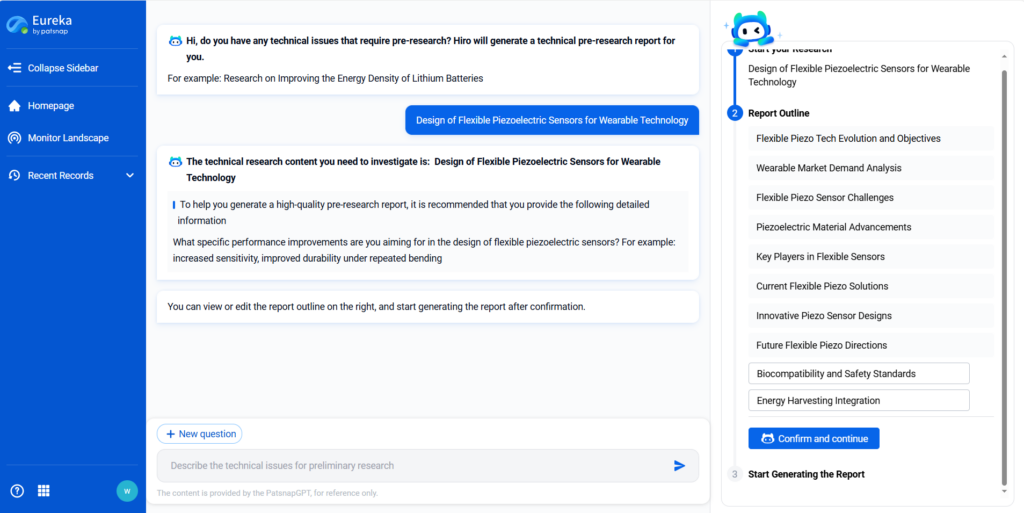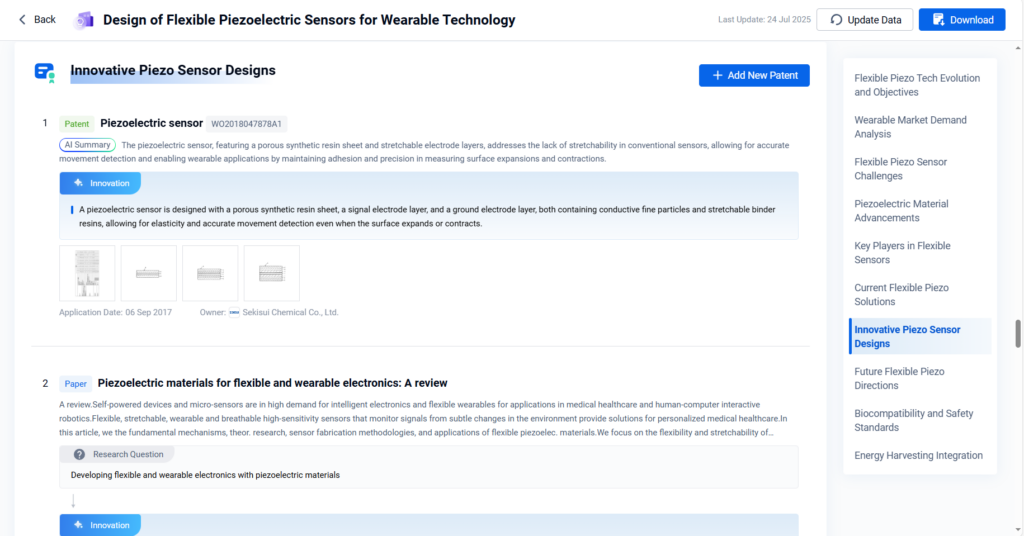
Piezoelectric sensors leverage the piezoelectric effect—the ability of certain materials to generate an electric charge in response to mechanical stress. Originally discovered in crystals like quartz, this phenomenon has since found its way into a diverse range of modern materials, including ceramics, polymers, and nanostructures.
In today’s technology landscape, where seamless data acquisition, energy efficiency, and miniaturization are critical, piezoelectric sensors present a compelling solution. They convert ambient mechanical stimuli into electrical signals, making them ideal for self-powered devices, real-time monitoring systems, and wearable technologies.
This blog explores the composition and properties of piezoelectric sensors, their cross-sector applications, comparative advantages, and future prospects—powered by insights from PatSnap Eureka AI Agent.
Material Composition & Key Properties
- Piezoelectric sensors are typically built from materials such as lead zirconate titanate (PZT), barium titanate, or polyvinylidene fluoride (PVDF).
- Fabrication techniques include sol-gel processing, hot pressing, electrospinning, and thin-film deposition.
- Key properties include:
● High electromechanical coupling efficiency
● Wide frequency response
● Flexibility and biocompatibility (for polymer-based variants)
● Thermal stability and robustness in harsh environments
● Scalability for micro/nano-scale integration
Comparative Advantages & Limitations
Advantages:
● Self-powered operation through energy harvesting
Piezoelectric sensors convert mechanical vibrations, pressure, or motion into electrical energy, enabling battery-free operation in remote or embedded systems—ideal for IoT nodes, wearables, and implants.
● High sensitivity and signal resolution
Due to their intrinsic material properties, especially in ceramic-based sensors like PZT and polymer-based variants like PVDF, piezoelectric sensors exhibit fast response times and high signal-to-noise ratios, making them suitable for detecting micro-vibrations, heartbeat fluctuations, or minute pressure changes.
● Scalability from macro to nanoscale
Piezoelectric sensing elements can be manufactured across a wide size range—from large industrial plates to nanoscale cantilevers in MEMS/NEMS devices. This dimensional flexibility enhances integration with miniaturized electronics and microfluidic systems.
● Mechanical flexibility with polymeric materials
Piezoelectric polymers (e.g., PVDF, P(VDF-TrFE)) offer mechanical flexibility, lightweight design, and biocompatibility, making them ideal for conformal and skin-contact applications such as e-textiles, biosignal patches, and flexible robotics.
● Multifunctionality beyond sensing
Many piezoelectric materials serve dual functions: they act not only as sensors but also as energy harvesters, actuators, or transducers—facilitating complex functions such as smart self-regulation, closed-loop control, or haptic feedback in robotics and wearables.
● Material diversity allows design tuning
From high-performance ceramics to eco-friendly biodegradable polymers, the wide range of available materials enables customization in terms of sensitivity, curie temperature, dielectric strength, and processing conditions.
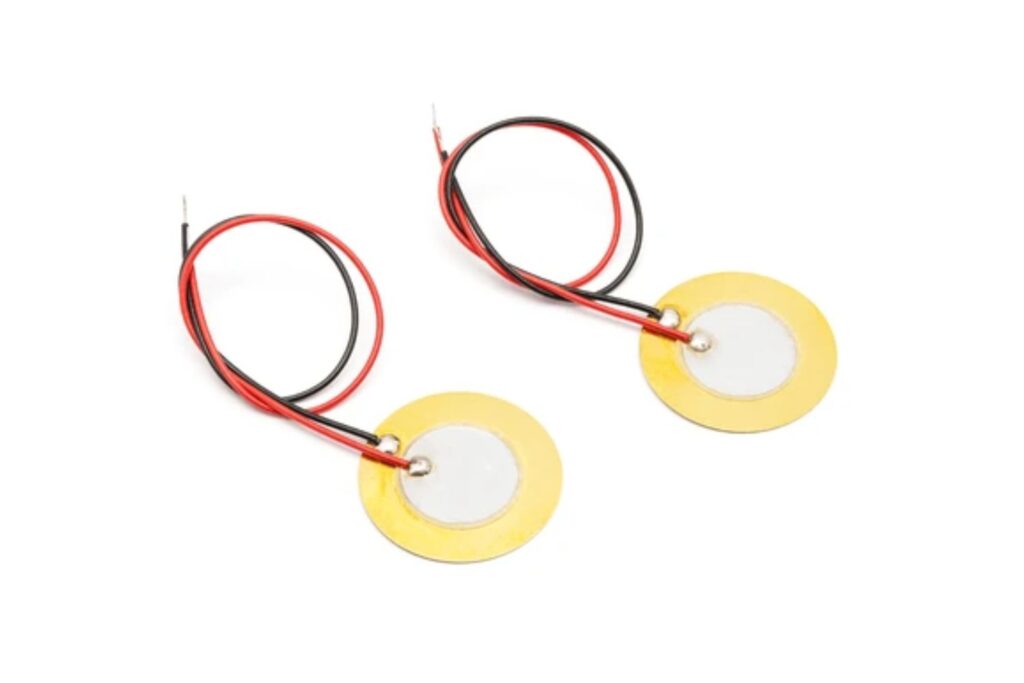
Limitations:
● Brittleness and mechanical fatigue in ceramics
While ceramic piezoelectrics like PZT offer high output, they are inherently brittle, which limits their durability under repeated bending, high-impact loads, or dynamic fatigue, especially in flexible systems.
● Fabrication cost and process complexity
Nanostructured or hybrid piezoelectric materials often require multi-step synthesis, vacuum deposition, or high-temperature annealing—increasing manufacturing costs and limiting scalability for commercial applications.
● Lead toxicity and environmental concerns
Many high-performance piezoelectrics (e.g., PZT) contain lead, raising issues of environmental regulation, biocompatibility, and disposability. The industry is actively seeking lead-free alternatives, such as barium titanate or potassium sodium niobate.
● Signal instability in dynamic or high-temperature environments
Piezoelectric signals can be prone to drift, charge leakage, or dielectric breakdown when exposed to high humidity, temperature fluctuations, or mechanical overloads—posing challenges for long-term reliability in outdoor or industrial settings.
● Power output limitations at micro/nano scale
In ultra-miniaturized formats, the amount of harvested energy or output voltage often becomes insufficient to power auxiliary electronics without additional circuitry, limiting their role to triggering events rather than sustained power supply.
● Limited performance under quasi-static conditions
Since piezoelectric materials generate voltage only under dynamic mechanical changes, they are unsuitable for applications requiring static or slowly varying force detection, unlike resistive or capacitive sensors.
Application Domains
1. Flexible & Wearable Electronics
Wearable technologies demand ultra-thin, conformable sensors that can operate without bulky power sources. Piezoelectric sensors fulfill this requirement by harvesting energy from body movement while continuously collecting biomechanical data. They can be embedded into fabrics, patches, or flexible films to monitor vital signs, motion, and joint strain in real time.
Research Frontlines:
Current innovations focus on skin-mimicking sensors, smart textiles, and integration with Bluetooth-enabled health monitoring platforms.
Related Reports:
- Design of Flexible Piezoelectric Sensors for Wearable Technology
- Innovations in Wearable Piezoelectric Therapeutic Devices

2. Energy Harvesting & Sustainability
With IoT devices proliferating, battery replacement becomes a bottleneck. Piezoelectric materials enable self-powered sensors by harvesting mechanical vibrations, pressure, or motion into usable energy. Applications span from industrial machinery to urban infrastructure, reducing reliance on traditional power sources and enhancing sustainability.
Research Frontlines:
Advancements include hybrid energy harvesting systems, ultralow-power sensors, and integration with storage modules.
Related Reports:
- Self-Powered Piezoelectric Energy Harvesting for IoT Applications
- Clean Energy Solutions Driven by Piezoelectric Advances
- How to Turn Ambient Vibrations into Usable Power
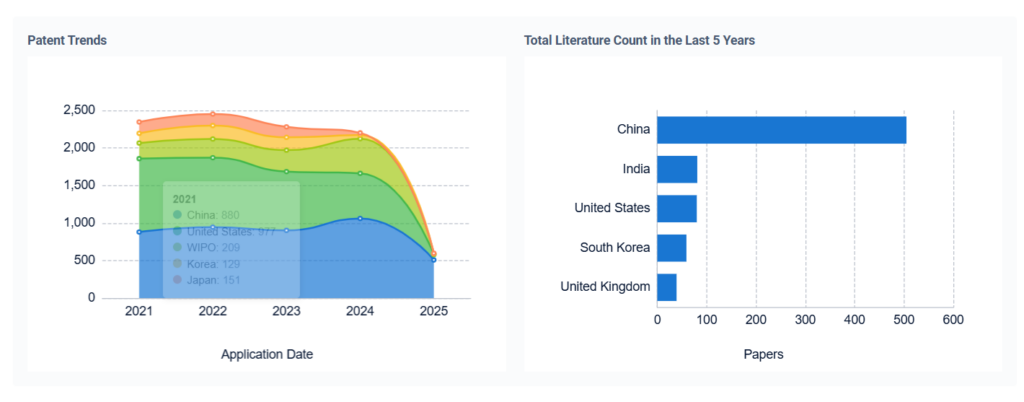
3. Healthcare & Biomedical Sensing
Medical-grade piezoelectric sensors offer high sensitivity, biocompatibility, and non-invasive operation. They’re ideal for detecting subtle biological signals, from heartbeats to neural impulses. These sensors are crucial for implantable devices, remote health diagnostics, and wearable biosignal interfaces.
Research Frontlines:
Focus areas include implantable neural probes, motion-triggered wound sensors, and multifunctional biosensors.
Related Reports:
- Biomedical Applications of Flexible Piezoelectric Sensors
- Tracking Bio-signals with Piezoelectric Mechanisms
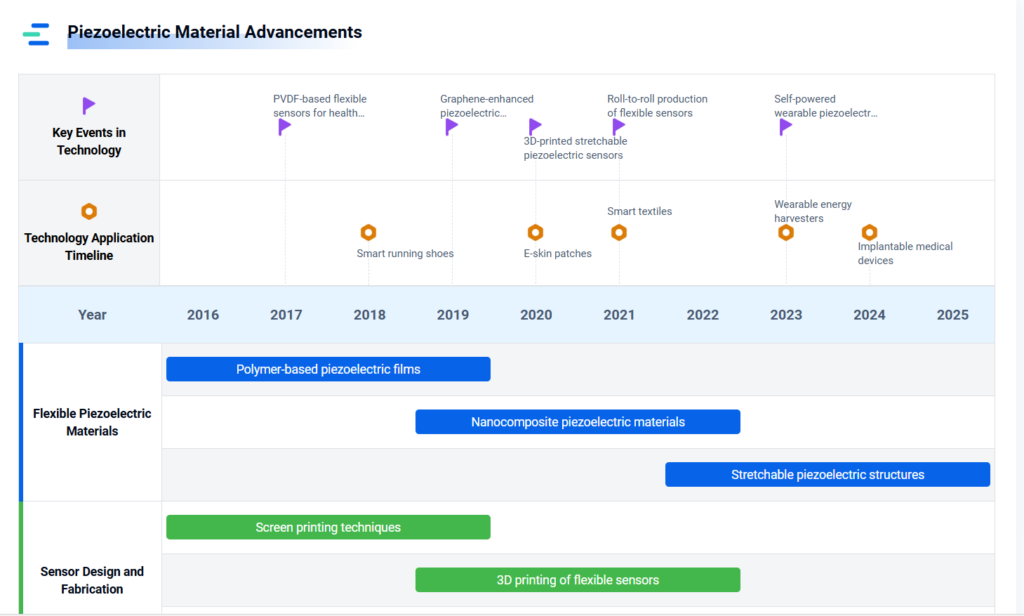
4. Industrial Structural Health Monitoring
In infrastructure and manufacturing, real-time condition monitoring is essential to prevent failures. Piezoelectric sensors provide continuous, precise feedback on structural stress, vibration, and material fatigue. They can be embedded in bridges, turbines, aerospace components, and heavy machinery for predictive maintenance.
Research Frontlines:
Development of piezoelectric arrays, miniaturized ultrasonic transducers, and AI-driven analysis platforms.
Related Reports:
- How Piezoelectric Sensors Detect Structural Defects
- Structural Health Prognosis Using Piezoelectric Arrays
- Real-time Monitoring of Building Integrity through Piezoelectrics
- Assessing Material Fatigue with Piezoelectric Sensors
5. IoT & AI-powered Sensing Systems
Piezoelectric sensors are increasingly used in IoT networks, serving as both data collectors and power generators. When combined with AI, they enable real-time anomaly detection, signal pattern recognition, and predictive analytics. Applications include smart homes, automated manufacturing, and intelligent transportation.
Research Frontlines:
Emphasis on AI-assisted design, signal filtering algorithms, and energy-autonomous networks.
Related Reports:
- AI-driven Data Interpretation from Piezoelectric Sensors
- How Piezoelectric Sensors Enhance Predictive Maintenance
- The Synergy between AI and Piezoelectric Sensors
Future Outlook & Research Frontiers
Over the next 5–10 years, piezoelectric sensors are expected to revolutionize:
● Smart wearables with energy-autonomous operation
● Edge AI-powered environmental monitoring networks
● Biodegradable medical implants
● Autonomous infrastructure management systems
● Nanostructured arrays for quantum-level sensing
● Flexible robotics and haptic human-machine interfaces
Emerging research also explores biocompatible polymer blends, 3D-printed piezoelectrics, and AI-assisted optimization of signal processing.

Conclusion & Strategic Takeaways
Piezoelectric sensors represent a pivotal innovation at the intersection of materials science and system design. From healthcare to infrastructure, their dual role as sensors and power sources addresses some of the most critical challenges in modern technology.
With capabilities that span precision, efficiency, and adaptability, they are poised to become a core component of next-generation devices across industries.
Ready to Power Innovation with Piezoelectric Sensors?
PatSnap Eureka AI Agent enables you to:
● Analyze thousands of global patents and technical publications
● Discover white space opportunities and innovation gaps
● Benchmark key players in sensor technologies
● Track emerging startups, licensing shifts, and IP trends
👉 Book a Eureka demo and unlock the piezoelectric sensors advantage for your next R&D challenge.
